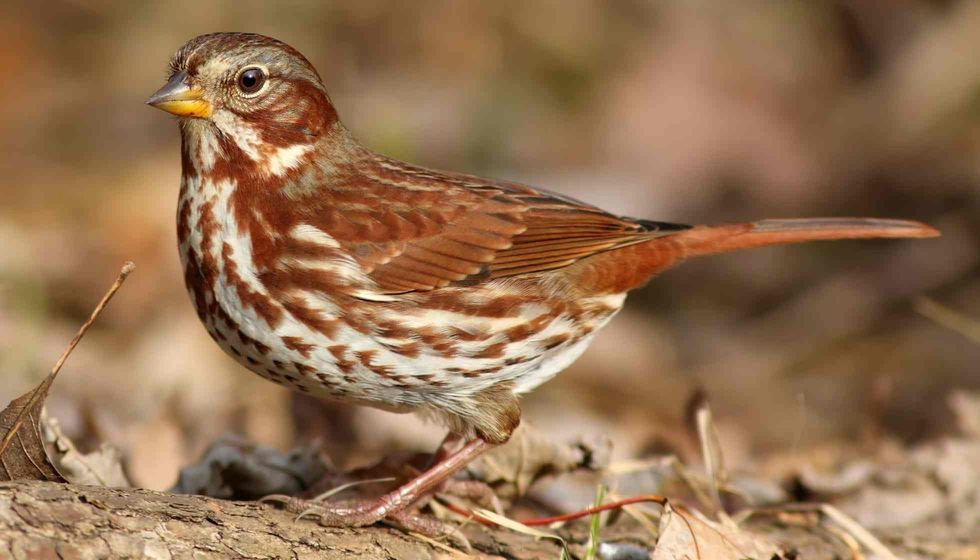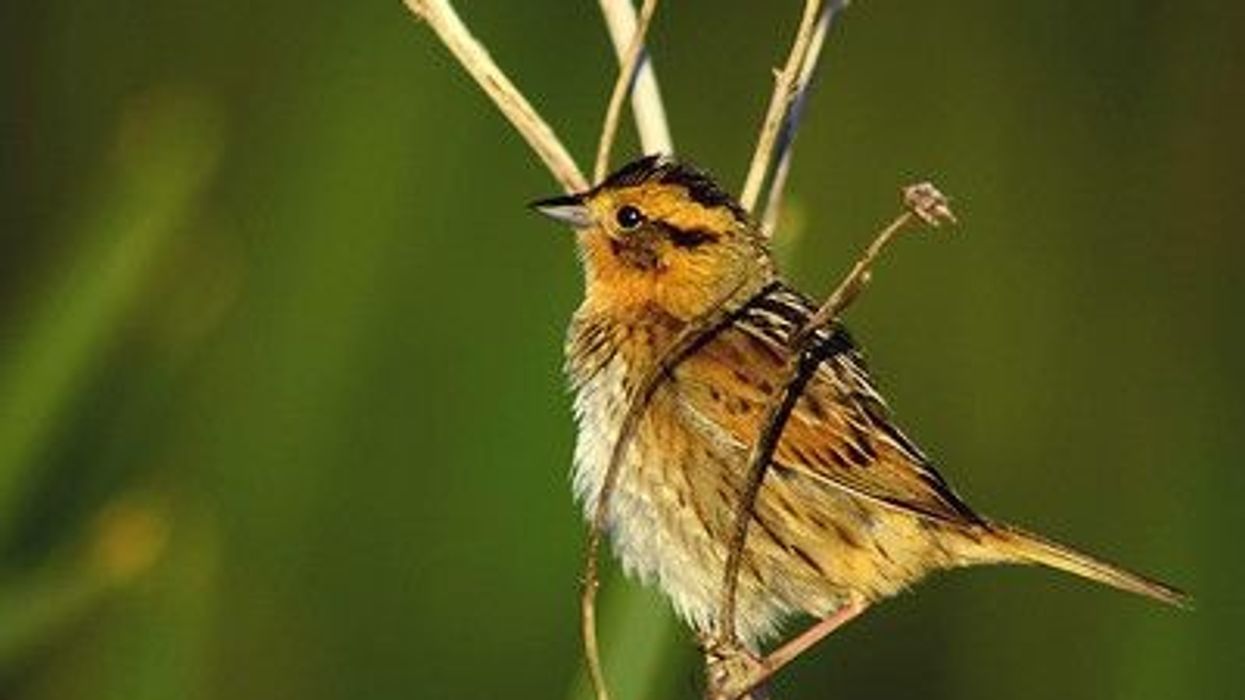Fox sparrows are terrestrial birds belonging to the family passeridae. They forage the ground in search of food and during this process they are hunted down by predators.
They scratch the surface of the earth in dense forests or bushy covers to feed on fallen fruits or seeds. They are omnivorous in nature and also eat caterpillars, insects, and other worms. These birds of North America like to live a solitary life catch their prey alone.
They get their common name from the red color of their feathers. There are various subspecies of fox sparrows that are spread across Washington, British Columbia, Alaska, California and other states of the U.S.
This thick billed bird is often confused with similar species like the hermit thrush, but their behavior and appearance are quite different.
After reading about these birds of North America, you may also look at tawny frogmouth facts and kagu facts.
Fox Sparrow Interesting Facts
What type of animal is a fox sparrow?
A fox sparrow is a bird commonly found in California, Alaska, and a few other parts of Canada and America. This dark red colored bird can be seen in dense thickets and have a splotchy body covered in brown. There are various subspecies of these birds that are spread across the U.S. and Canada.
What class of animal does a fox sparrow belong to?
Fox sparrows (Passerella iliaca) belong to the class aves, order passeriformes, family passeridae. This species has a plump body and a medium-sized tail. Passerella iliaca belongs to the category of large new world sparrows.
How many fox sparrows are there in the world?
The estimated breeding population of fox sparrows is 20 million. These sparrows will continue to increase in population. This species prefer to live in groups with other fox sparrows.
Where does a fox sparrow live?
Woods and thickets are locations where a fox sparrow lives. Dense forests and bushlands are also preferred locations for a fox sparrow. Different subspecies are present in different regions of the U.S. including California and Washington.
What is a fox sparrows habitat?
The habitat of a slate-colored fox sparrow includes woodlands, undergrowth, bushes, dense covers, streamside thickets, brushy fields, chaparral, coniferous trees, parks and gardens which have good vegetation. The four main types of fox sparrows are thick-billed fox sparrows, red fox sparrows, sooty fox sparrows and slate-colored fox sparrows.
Who do fox sparrows live with?
Slate-colored fox sparrows are mostly solitary and are not found in flocks. The red fox sparrow forages for food alone, and sadly get hunted by other predators. These sparrows primarily nest in western and northern mountains.
How long does a fox sparrow live?
The life expectancy of a slate-colored fox sparrow is nine years in the wild.
How do they reproduce?
North American fox sparrows breed once or twice a year. The breeding season starts in mid May and continues till the end of April.
The average clutch size of the fox sparrow is two to five eggs. The eggs are incubated by the female sparrow, and the nest is only 72 in (6 ft) above the ground. The nest is built in a cup shape with strands of animal hair, small twigs, stems, tree bark, dried grass and leaves.
The eggs hatch after a period of 12 to 14 days and the hatchlings are fed by both the male and the female. The fledgling age range in fox sparrows is nine to ten days.
What is their conservation status?
The conservation status of a fox sparrow is of the Least Concern as listed by the IUCN Red List.
Fox Sparrow Fun Facts
What do fox sparrows look like?
Fox sparrows have brown splotches all over their body and a thick bill that is bi-colored, pale, sooty and dark yellow in color. The wingspan of these North American birds is 10.50-11.75 in (27-29 cm).
How cute are they?
Fox sparrows are not very cute. They are tiny birds that scratch and kick the ground to find food.
How do they communicate?
This thick billed bird communicates through calls and songs. Their singing is sweet to listen to, but sometimes they can be loud and noisy.
How big is a fox sparrow?
Fox sparrows are a small bird. The average length of a fox sparrow is 6-8 in (15-20 cm).
How fast can a fox sparrow fly?
Fox sparrows can fly at a considerable speed and they are known to cover long distances during migration.
How much does a fox sparrow weigh?
The average weight of a fox sparrow is 0.03 lb (1.3 oz). They have plump bodies and dark brown spots all over their body.
What are the male and female names of the species?
The male and female fox sparrows do not have distinctive names. They are simply called male and female fox sparrows.
What would you call a baby fox sparrow?
A young fox sparrow can be called a nestling. These thick billed birds do not have a distinct scientific name. The juveniles of all bird species are called nestlings.
What do they eat?
Fox sparrows are omnivores that kick in leaf litters in a double-scratch movement to forage. They eat seeds, berries, worms, fallen fruits and insects.
Are they dangerous?
No, fox sparrows are not dangerous. They cannot cause any harm to human beings.
Would they make a good pet?
Yes, fox sparrows can be kept as pets when they are rescued as juveniles. They return to their feeders and where artificial habitats are created. Leave a leaf litter in your garden or yard and the fox sparrow will come to forage and may sing songs in the garden trees.
Did you know...
The red fox sparrow, sooty fox sparrow, thick-billed fox sparrow and slate-colored fox sparrow build their territories in close vicinity with each other. The habitat loss of these birds is primarily due to global warming, a phenomenon that is having a severe impact of other wildlife as well.
Fox sparrows that breed in Washington, migrate towards south Washington during the winters.
How to tell a song sparrow from a fox sparrow?
The fox sparrows body is typically large and bulky when compared to the song sparrow. Fox sparrows have dark brown splotches all over their body while the song sparrow has distinctive stripes on the head.
Why is it called a fox sparrow?
Fox sparrows are named for the bright, rich, and red splotches in which fox sparrows are covered. Like a fox, these sparrows also live alone and hunt their prey without any presence of flocks.
Here at Kidadl, we have carefully created lots of interesting family-friendly animal facts for everyone to discover! Learn more about some other birds including Adélie penguin, or jacana.
You can even occupy yourself at home by drawing one of our fox sparrow coloring pages.










